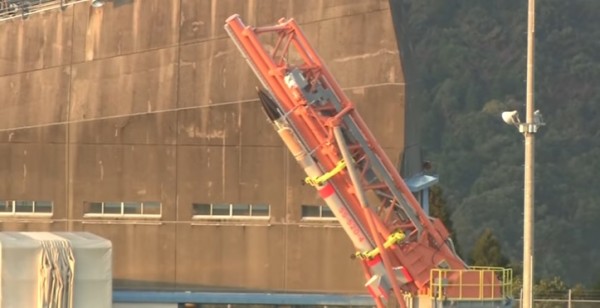By Ana Verayo, | January 16, 2017

JAXA's mini booster rocket failed to launch a microsatellite in space due to a communications failure. (YouTube)
A pioneering mission in Japan failed to launch one of the world's smallest and most cost-effective rockets ever on Sunday, January 15.
This small experimental rocket, which measures 32 feet, blasted off from the Uchinoura Space Center in southwest Japan, around 8:30 a.m. local time.
Like Us on Facebook
According to Japan Aerospace Exploration Agency (JAXA), the SS-520-4 booster rocket failure is linked to a communications anomaly that forced mission controllers to abort the ignition of the rocket's second stage.
This small booster rocket was also carrying a small payload, a microsatellite known as TRICOM-1 that fell into the sea, just southeast of Kagoshima.
JAXA officials say that the booster rocket performed well and as planned, however, they were unable to receive a signal from the booster which prompted them to abort the mission. This data downlink failure occurred 20 seconds after the launch, and the mission was aborted three minutes after lift-off.
Unfavorable weather conditions had forced the scientists to move the launch of the satellite from January 10, Tuesday.
The SS-520-4 is similar to the length of a telephone pole. It is also designed to expand in its second stage of the rocket to boost the satellite into space for a few minutes. The third stage of the rocket will ultimately boost the scientific payload into lower Earth orbit.
The rocket weighs 2.9 tons and measures 1.7 feet in diameter. The CubeSat TRICOM-1 weighs only 6.6 pounds and is comparable to the size of an oven toaster. This microsatellite was designed by students to take photos of Earth and also carry out communications experiments.
Satellites this small are normally launched to space in batches. JAXA mission scientists were aiming to demonstrate the potential of a low-cost dedicated booster rocket that can launch tiny satellites using commercial technology. This Japanese space mission is estimated to have cost around $3.5 million.
-
Use of Coronavirus Pandemic Drones Raises Privacy Concerns: Drones Spread Fear, Local Officials Say

-
Coronavirus Hampers The Delivery Of Lockheed Martin F-35 Stealth Fighters For 2020

-
Instagram Speeds Up Plans to Add Account Memorialization Feature Due to COVID-19 Deaths

-
NASA: Perseverance Plans to Bring 'Mars Rock' to Earth in 2031

-
600 Dead And 3,000 In The Hospital as Iranians Believed Drinking High-Concentrations of Alcohol Can Cure The Coronavirus

-
600 Dead And 3,000 In The Hospital as Iranians Believed Drinking High-Concentrations of Alcohol Can Cure The Coronavirus

-
COVID-19: Doctors, Nurses Use Virtual Reality to Learn New Skills in Treating Coronavirus Patients








